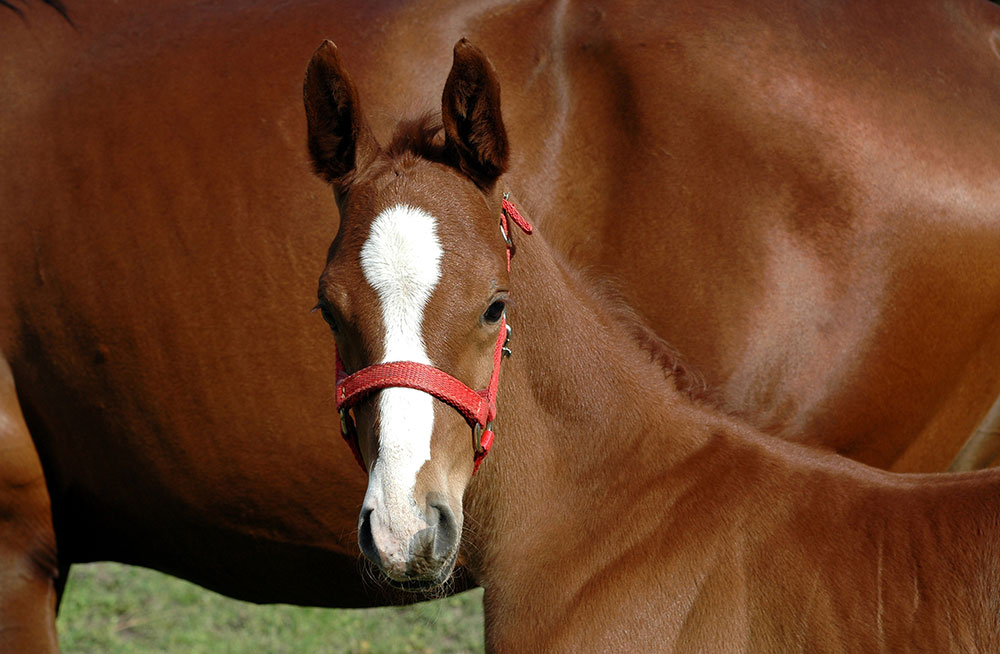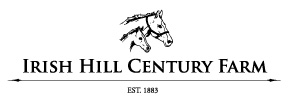
Thoroughbred breeding is a meticulous and time-honored practice that has been refined over centuries to produce horses of exceptional speed, stamina, and athleticism. These prized animals are the foundation of the global horseracing industry, captivating audiences with their thrilling performances on the track.
The origins of Thoroughbred breeding can be traced back to 18th-century England, where a handful of imported Oriental stallions were crossed with native English mares. These matings resulted in a new breed of horses known for their unmatched speed and agility, quickly gaining popularity among the English aristocracy.
Over time, Thoroughbred breeding became a highly specialized field, with breeders carefully selecting stallions and mares based on their pedigrees, performance records, and physical characteristics. The goal was to produce offspring that inherited the desirable traits of their ancestors, leading to a continuous improvement in the breed's overall quality.
Today, Thoroughbred breeding is a global enterprise, with breeding farms located in countries across the world. Breeders meticulously study pedigrees, utilizing complex inbreeding and outcrossing strategies to enhance the breed's genetic potential. They also employ advanced technologies, such as DNA testing, to better understand the genetic makeup of their horses.
The breeding process is a delicate balance of art and science. Breeders must consider a multitude of factors, including the horses' temperaments, conformation, and health. They must also navigate the unpredictable nature of genetics, as there is no guarantee that the desired traits will be passed down to the offspring.
Despite the challenges, Thoroughbred breeding remains a passionate pursuit for breeders worldwide. The rewards are significant, as successful breeding programs can produce horses that command top prices and achieve legendary status on the racetrack.
Please note that breeding Thoroughbreds is only done with a "live cover" and no artificial insemination as practiced in other breeds.
Here are some key principles that guide Thoroughbred breeding:
- Pedigree Analysis: Breeders carefully study the pedigrees of potential stallions and mares, tracing their lineages back several generations. They look for ancestors with proven performance records and desirable traits, such as speed, stamina, and soundness.
- Matching Traits: Breeders aim to match stallions and mares that complement each other's strengths and weaknesses. They consider factors such as temperament, conformation, and racing style to produce offspring with a well-rounded set of traits.
- Outcrossing: Breeders use outcrossing to introduce new genetic material and genetic diversity.
- Selection and Retaining: Breeders carefully evaluate foals based on their conformation, temperament, and early training progress. They selectively retain those that demonstrate the most promise for racing or breeding, while repositioning those that do not meet their standards by using them for riding, show, or sport horses.
- Nurture and Management: Proper management and care are essential for the successful development of Thoroughbreds. Breeders provide foals with a nurturing environment, ensuring they receive adequate nutrition, exercise, and veterinary care.
- Performance Evaluation: Breeders closely monitor the performance of their horses, both in training and on the racetrack. They use this information to guide future breeding decisions and evaluate the effectiveness of their breeding strategies.
- Continuous Improvement: Thoroughbred breeding is an ongoing process of refinement and improvement. Breeders constantly seek new knowledge and techniques to enhance the breed's overall quality and maintain its dominance in the world of horse racing.
 W9H Ladytown Business Park, Naas, Co. Kildare, Ireland
W9H Ladytown Business Park, Naas, Co. Kildare, Ireland
ph: +353 45 40 7040
Email: info@equilume.com



Equilume Performance Lighting is a unique system that comprises smart Stable Lights and mobile Light Masks designed to maximize health, performance and breeding efficiency. This system harnesses all the benefits of natural daylight for the stabled horse and permits continued exposure to optimum lighting when travelling or at pasture.
 281 Burke Road, Stillwater, NY 12170
281 Burke Road, Stillwater, NY 12170
ph: (518) 584-1515
Email: Rick Burke – Owner – rick@irishhillcenturyfarm.com

Irish Hill Century Farm is a full care thoroughbred boarding facility, raising world class New York Bred racehorses.
Breeding - Thoroughbred - United States | International (Click here)
Alabama
- Flying P Ranch, 5568 Mason Road, Hope Hull, AL 36043
- Windwood Equestrian, 4848 Highway 11 Pelham, Alabama 35124
Arizona
California
- Daehling Ranch Thoroughbreds, 10045 Grant Line Road, Elk Grove, CA 95624
- E.A. Ranches, P.O. Box 329, Santa Ysabel, CA 92070
- Harris Farms, Horse Division, 27366 W. Oakland Ave., Coalinga, CA 93210
- Legacy Ranch, 21455 N. Clements Road, Clements, CA 95227
- Lovacres Ranch, P. O. Box 90335, Long Beach, CA 90809-0335
- Rancho San Miguel, P.O. Box 741, 1741 West 10th St., San Miguel, CA 93451
- Rancho Temescal, P.O. Box 378, Piru, CA 93040
- Tommy Town Thoroughbreds, 5699 Happy Canyon Road, Santa Ynez, CA 93460
Florida
- Bridlewood Farm, 8318 NW 90th Terrace, Ocala, FL 34482
- Double Diamond Farm, 899 S.W. 85th Ave., Ocala, FL 34481
- Florida Thoroughbred Breeders' & Owners' Assn, 801 SW 60th Avenue, Ocala FL 34474
- Fox Haven Farm, 7303 NW 25th LN, Jennings, FL 32053
- Hartley/De Renzo Thoroughbreds, 6500 NW Hwy. 225A, Ocala, FL 34482
- Journeyman Stud, 5571 N.W. 100th Street, Ocala, FL 34482
- Northwest Stud, 2500 SW 125th Ave., Ocala, FL 34481
- Ocala Stud Farm, P.O. Box 818, Ocala, FL 34478
- Pleasant Acres Stallions, 9127 NW 150th Avenue, Morriston, FL 32668
- Winding Oaks Farm, 5850 SW College Road, Ocala, FL 34474
Indiana
- Indiana Stallion Station, 4967 East 100 South, Anderson, IN 46017
- R Star Stallions, 5255 N 350 E, Anderson, IN 46012
- Risen Storm Thoroughbreds, Anderson, IN 46017
- Swifty Farms, 351 S. US Highway 31, Seymour, IN 47274
Kentucky
- Adena Springs Kentucky, 701 Cane Ridge Road, Paris, KY 40361
- Airdrie Stud, P.O. Box 487, Midway, KY 40347
- Ashford Stud, P.O. Box 823, Versailles, KY 40383
- Buck Pond Farm, 1055 Paynes Mill Road, Versailles, KY 40383
- Calumet Farm, 3301 Versailles Road, Lexington, KY 40510
- Castleton Lyons, 2469 Iron Works Pike, Lexington KY 40511
- Claiborne Farm, P.O. Box 150, Paris, KY 40362-0150
- Clearsky Farms, 6575 Russell Cave Road, Lexington, KY 40511
- Crestwood Farm, 3933 Spurr Road, Lexington, KY 40511
- Darby Dan Farm, 3225 Old Frankfort Pike, Lexington, KY 40510
- Darley, 3333 Bowman's Mill Road, Lexington, KY 40513
- Gainesway, 3750 Paris Pike, Lexington, KY 40511
- Hill 'n' Dale Farms at Xalapa, 2308 N Middletown Road, Paris KY 40361
- Juddmonte Farms, 3082 Walnut Hill Road, Lexington, KY 40515
- Lane's End, Box 626, Versailles, KY 40383
- Mill Ridge Farm, 2800 Bowman Mill Road, Lexington, KY 40513 (2)
- Runnymede Farm, 600 Cynthiana Road, Paris, KY 40361
- Spendthrift Farm, 884 Iron Works Pike, Lexington, KY 40511
- Taylor Made Stallions, Inc., 2765 Union Mill Road, Nicholasville, KY 40356
- Three Chimneys Farm, P.O. Box 114, Midway, KY 40347
- WinStar Farm, LLC, 3001 Pisgah Pike, Versailles, KY 40383
Louisiana
- Clear Creek Stud, LLC. 11591 Highway 1078, Folsom, LA 70437
- Elite Thoroughbreds, 80535 Chenel Road, Folsom, LA 70437
- Red River Farms, P.O. Box 385, Coushatta, LA 71019
- The Stallion Station @ Copper Crowne, 5180 Highway 182 South, Opelousas, LA 70570
- Whispering Oaks Farm, 3411 Mills St., Carencro, LA 70520.
Maryland
- Adena Springs at Heritage Stallions, 319 Myrtle Wilson Road, Chesapeake City, MD 21915
- Bonita Farm, P.O. Box 366, 3745 Harmony Church Road, Darlington, MD 21034
- Dark Hollow Farm, 16123 Dark Hollow Rd, Upperco, MD 21155
- Murmur Farm, 1334 Stafford Road, Darlington, MD 21034
- Northview Stallion Station, P.O. Box 89, 55 Northern Dancer Drive, Chesapeake City, MD 21915
Michigan
New Jersey
New Mexico
New York
- Dutchess Views Farm, 189 Johnnycake Hollow, Pine Plains, NY 12567
- Irish Hill Century Farm, 281 Burke Road, Stillwater, NY 12170
- McMahon of Saratoga Thoroughbreds, LLC, 180 Fitch Road, Saratoga Springs NY 12866
- Meadow View Thoroughbreds, LLC, 143 W. Ames Road, Canajoharie, NY 13317
- Questroyal North, 58 Dunn Road, Stillwater, NY 12170
- Rockridge Stud, 5384 Route 9H-23, Hudson, NY 12534
- Sequel Stallions New York, 167 Maple Lane, Hudson, NY 12534
- Waldorf Farm, P.O. Box 959 North Chatham, NY 12132
North Dakota
Ohio
Oklahoma
- Mighty Acres, 675 W. 470, Pryor, OK 74361
- River Oaks Farms, Inc., 3216 Highway 177 North, Sulphur, OK 73086
- Rockin Z Ranch, 2275 S. Hwy 75, Beggs, OK 74421
Oregon
Pennsylvania
- Northview PA, P.O. Box 95, 163 Little Britain Road, Peach Bottom, PA 17563
- Pin Oak Lane Farm, 14780 Boyer Road, P.O. Box 129, New Freedom, PA 17349-0129
Texas
- Asmussen Horse Center, P.O. Box 1861, Laredo, TX 78044
- Lane's End Texas, 26685 Mitchell Road, Hempstead, TX 77445
- Valor Farm, P.O. Box 966, Pilot Point, TX 76258
Virginia
- Audley Farm, P.O. Box 510, Berryville, VA 22611
- Eagle Point Farm, 14509 Blunts Bridge Road, Ashland, VA 23005
Washington
West Virginia
- O'Sullivan Farms, P.O. Box 670, Charles Town, WV 25414
- Taylor Mountain Farm, 347 Old Shennandale Road, Charles Town, WV 25414
Breeding - Thoroughbred - International
Argentina
- Haras El Paraiso, Arellano 105, San Antonio de Areco, Buenos Aires 2760, ARG
- Haras Firmamento, Moreno 957-10 of 2, Buenos Aires 1091, ARG
- Haras Vacacion, M Lezica 3043, Piso 2 - San Isidro, Buenos Aires 1642, ARG
Australia
- Allandale Park Thoroughbreds, Hobbys Yards, Bathurst, NSW 2795 AUS
- Amarina Farm, P.O. Box 132, Denman, NSW 2328 AUS
- Argyle Thoroughbreds, Four Mile Creek Road, Panuara, NSW 2800 AUS
- Armidale Stud, P.O. Box 318, Carrick, TAS 7291, AUS
- Arrowfield Stud, Gundy Road, Scone, NSW 2337 AUS
- Baramul Stud, Widden Valley, Denman, NSW 2328 AUS
- Blue Gum Farm, RMB 4115, Strathbogie Road, Euroa, VIC 3666 AUS
- Bombora Downs, P.O. Box 48, Bittern, VIC 3918 AUS
- Burwood Stud, P .O. Box 135, Pittsworth, QLD 4356 AUS
- Canning Downs, P.O. Box 55, Seaforth, NSW 2092 AUS
- Carin Park, 7736 Port Fairy Road, Hamilton, VIC 3300 AUS
- Clear Mountain Fairview, 122 Woodlands Road, Greenmount, QLD 4359 AUS
- Coolmore Stud, Denman Road, Jerry's Plains, NSW 2330, AUS
- Corumbene Stud, Mendooran Road, Dunedoo, NSW 2844 AUS
- Cressfield, New England Highway, Parkville, NSW 2337 AUS
- Darley - Kelvinside, 401 Rouchel Road, Rouchel , NSW 2336 AUS
- Darley - Northwood Park, 1030 Northwood Road, Seymour, Victoria, VIC 3660 AUS
- Eureka Stud Cambooya, 4358, Cambooya, QLD 4358, AUS
- Fulmen Park Pty Ltd., 197 Longwood-Ruffy Road, Longwood East, VIC 3666 AUS
- Glenlogan Park Stud, Innisplain Road, Innisplain, Via Beaudesert, QLD 4285 AUS
- Glenrae Thoroughbreds, 511 Standen Drive, Lower Belford, NSW 2335 AUS
- Grenville Stud, 289 Station Road, Whitemore, TAS 7303 AUS
- Heytesbury Thoroughbreds, 3607 South West Highway, Keysbrook, WA 6126 AUS
- Highgrove Stud C/- 3 McAdam Court, Toowoomba, QLD 4350 AUS
- Hollylodge Thoroughbreds, P.O. Box 1, Avenel, VIC 3664 AUS
- Ilala Stud, 430 Gundy Road, Scone, NSW 2337 AUS
- Kambula Stud, P.O. Box 395, Kadina, SA 5554 AUS
- Kitchwin Hills, Waverley Road, Scone, NSW 2337 AUS
- Kooringal Stud, Harefield Road, Wagga Wagga, NSW 2650 AUS
- Larneuk Stud, 252 Killeens Hill Road, RMB 3550, Euroa, VIC 3666 AUS
- Lindsay Park Stud, P.O. Box 138, Angaston, SA 5353 AUS
- Lyndhurst Stud Farm, P.O. Box 348, Warwick, QLD 4370 AUS
- Macquarie Stud, Mitchell Highway, Wellington, NSW 2820 AUS
- Makybe, 250 Volum Road, Gnarwarre, VIC 3221 AUS
- Milford Thoroughbreds, P.O. Box 280, Nagambie, VIC 3608 AUS
- Mill Park Stud, Moonee Hills Road, Meningie, SA 5264 AUS
- Murrulla Stud, Ashbrooke Road, Wingen, NSW 2337 AUS
- Newhaven Park Stud, Boorowa, NSW 2586 AUS
- Newlands Thoroughbreds, 830 Northwood Road, Seymour, VIC 3660, AUS
- Raheen Stud, 1585 Goomburra Road, Gladfield, Warwick, QLD 4370 AUS
- Rheinwood Pastoral Co., P.O. Box 1076, Bowral, NSW 2576 AUS
- Riverdene Stud, Tumbarumba Road, Wagga Wagga, NSW 2650 AUS
- Segenhoe Stud Australia, 945 Rouchel Road, Aberdeen, 2336 AUS
- Stratheden Stud, 815 Manilla Road, Tamworth, NSW 2340 AUS
- Swettenham Stud, P.O. Box 210, Nagambie, VIC 3608 AUS
- Torryburn Stud, 245 Torryburn Road, Torryburn, Vacy, NSW 2421 AUS
- Tyreel Stud, 626 Castlereagh Road, Agnes Bank, NSW 2753 AUS
- Vinery Australia Pty Ltd., 684 Segenhoe Road, Scone, NSW 2337 AUS
- Widden Stud, Widden Valley Road, Denman, NSW 2328 AUS
- Willow Grove Stud, P.O. Box 145, Woodside, SA 5244 AUS
- Woodside Park Stud, P.O. Box 729, Woodend, VIC 3442 AUS
- Yarradale Stud, 536 O'Brien Road, Gidgegannup, WA 6083 AUS
- Yarraman Park Stud, P.O. Box 279, Scone, NSW 2337 AUS
Canada
- Adena Springs North, 14875 Bayview Ave., Aurora, Ontario L4G 0K8 CAN
- Colebrook Farms, 6270 Concession 5, Uxbridge, ON L9P 1R1 CAN
- Highfield Stock Farm Inc., P.O. Box 927, Okotoks, Alberta T1S 1A9 CAN
Ireland
- Airlie Stud, Grangewilliam, Maynooth, Co Kildare, IRE
- Coolmore, Fethard, Co. Tipperary, E91 XK26 IRE
Japan
- Big Red Farm, 120-4 Meiwa, Niikappu-cho, Niikappu-gun, Hokkaido 059-2425 JPN
- Japan Racing Horse Association Stud Index
- Shadai Stallion Station, Hokkaido, 275 Hayakitagenbu, Abira, Yufutsu District, Hokkaido Prefecture 059-1432 JPN
Korea
United Kingdom
- Hedgeholme Farm, Winston Darlington, Durham, DL2 3RS UK
- Juddmonte Farms Banstead Manor Stud, Cheveley, Newmarket, Suffolk, CB8 9RD UK
Breeding for the Next Champion: 6 Important Considerations for Broodmares
The racing career of Thoroughbred mare, Miss Hockaday, was an immediate success, with career earnings amounting to nearly $262,000, spanning across Oklahoma, Texas, Arkansas and Iowa.
With a champion bloodline harkening to Thoroughbred greats like Seattle Slew and Northern Dancer, owner-trainer, husband-and-wife duo, Jearl (Ace) and Randy Hare, decided her second career would be as a broodmare, continuing on her legacy.
“To see Miss Hockaday’s racing success, and to continue her on as a broodmare, was amazing,” said Randy Hare, co-owner of Hare Racing Stables in Oklahoma City. “She ran a lot of races and beat a lot of great horses. With such high earnings, we only paid $800 for her. It was a very exciting time, and she retired from racing completely sound.”
With her success on the track, it was a paramount decision to select the best possible sire for Miss Hockaday’s first foal.
“Living in Oklahoma, we don’t have a large pool of premier stallions to choose from,” said Hare. “I got her to the best stallion I could, and that was in Kentucky.”
Miss Hockaday was bred to a leading sire, Shackleford, who after retiring in 2012 with $3,090,101 in earnings, cashed in with an initial stud fee of $20,000. The foal, Hareraising, was sold at Keeneland and soon embarked on her racing career.
A mare’s health leading up to breeding is critical for the success of conception, as well as a healthy foal.
Consider These 6 Important Factors for Broodmares and Successful Breeding
- Suppress estrus for improved fertility with Regu-Mate®, Altren® Or Ovamed®.
Estrus suppression will help you predict estrus, as well as improve a mare’s fertility. Regu-Mate facilitates breeding earlier in the season by helping transitional mares cycle regularly. Scheduled breeding with Regu-Mate helps breeding barns manage costs of shipped semen, reduce number of stallion collections needed and schedule the estrous cycles of donor and recipient mares for embryo transplants. By administering Regu-Mate or Ovamed®, mares will return to estrus within five days following treatment. - Ensure mares are at a healthy weight.
Mares should enter the breeding season fit and gaining weight for better chances of successful conception, according to the American Association of Equine Practitioners (AAEP). - Eliminate stress as much as possible.
Stress can cause a mare’s level of Progesterone to drop. This hormone is critical to maintain pregnancy. Illness can cause the mare's system to secrete prostaglandins, which may cause foal loss (commonly referred to as abortion), according to the AAEP. - Maintain current vaccinations.
Protect against abortions in pregnant mares through vaccinations against Eastern and Western encephalomyelitis, West Nile virus, influenza and tetanus at the beginning of pregnancy. Administer booster vaccinations one month before foaling to increase the antibody level in the mare's colostrum to help protect the newborn foal from disease risk. The AAEP also recommends mares be vaccinated against equine rhinopneumonitis at five, seven and nine months' gestation. - Protect the mare and foal from parasites.
As the mare is the primary source for her foal’s parasite risk, it is important for her to be on a safe and effective deworming schedule, with guidance on frequency and timing provided by your veterinarian. - Ensure nutritional needs are met.
As the foal continues to grow, especially during the last four months of pregnancy, a mare’s energy needs will increase. Provide enough quality forage and grain to meet these heightened energy requirements. When it comes time for your mare’s big day, make sure you have everything needed with this Professional Foaling Kit.
Continue on the legacy. Ensure successful conception through excellent broodmare health and these proven solutions for improved fertility, Regu-Mate and Ovamed.
All photographs and images courtesy of Valley Vet.
This article originally appeared on Valley Vet and is published here with permission. Valley Vet Supply was founded in 1985 by veterinarians for people just like you - people who want the very best for their four-legged friends and livestock.
There are more informative articles in our section on Health & Education.
































